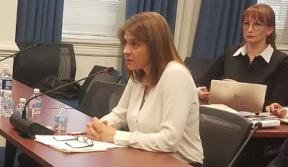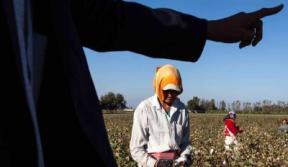Lack of Teachers, Inadequate Funding Hamper Efforts
to Fulfill President's Campaign Vow
By Emily Wax
HOMA BAY, Kenya -- The tree was sprawling, its trunk thick, its shade cool. But those weren't the reasons why a cherub-faced teacher with oversized glasses and a weakness for teaching "Romeo and Juliet" in Swahili decided to move his class of 150 fifth-grade students outside.
"We are so packed," said Ernest Otieno, the erudite head teacher of Asumbi Primary School, who sat after the lesson in his closet-sized dark office with no phone, electricity or windows in this rural school about 175 miles northwest of the capital, Nairobi. "We have too many brains and not enough buildings or books."
Kenya is trying once again to institute free primary education. When the new president, Mwai Kibaki, announced in January that starting immediately school through grade 8 would be free, 1.5 million new pupils showed up in just the first week. Some were barefoot, some orphaned by HIV-AIDS and others just desperate to join more privileged friends. With them came 30-year-old parents enrolling in first-grade classes to learn to read and write.
"The birthright of a child is good health and free primary education," Kibaki said during last year's presidential campaign. Kenya's previous two presidents, Jomo Kenyatta and Daniel arap Moi, also abolished fees for several months as part of campaign promises. Each time, the fees were reintroduced when the government said it could not fund universal education.
Primary schools were charging between $20 and $350 a year per child, depending on the area of the country. There was a separate fee of around $30 for a uniform and books. Many families could afford to send only one child.
Other nations in sub-Saharan Africa have launched similar efforts to make education free. Uganda's program started in 1996, but the schools are overcrowded and parents are being asked to pay for some elements, such as lunch. Tanzania made primary school free in 2001 and has been struggling to fund the program. Ghana and Ivory Coast have model universal public education systems that have existed since independence.
"Can we at least start to train people with enough skills to read instructions and become a mechanic?" asked Otieno, a thoughtful man who carries a worn briefcase of woven straw. "Or can we dream of teaching so well that our students could write literature or perform a heart operation? We want to do it all. But we aren't ready just yet."
For the past nine months, teachers, government officials, parents and students have struggled to set up public schools that do not have enough teachers and restrooms, let alone books. The budget so far has been about half of what is needed, school officials report. The government has promised to double it next year.
"I like my teacher," whispered a shy Kephas Goga, 16, who was just starting Asumbi Primary School in a class of 106 students. "But I have never had the delight to meet him. There are so many of us stepping in line to inquire after the lessons that we can't all try."
Some teachers use megaphones as they give lessons, more like professors at state universities. At Cheleta Primary School in Nairobi, there are two teachers for 213 first-grade students.
Kenya has 175,000 public primary school teachers but needs 60,000 more, according to the Kenyan National Union of Teachers.
"What you notice mainly is that there are so many children that learning has turned into the lecture method. But, you know, at primary level, each child has to have some attention," said Joseph Chirchir, acting chairman of the teachers union. "And the lack of teachers is causing problems. Sometimes the students come prepared with books and stationery but there is no teacher."
Lunch programs are also a problem, because the few schools that operate them do not have enough meals for the number of hungry children now arriving.
With a stunning number of children orphaned by HIV-AIDS at schools such as Asumbi Primary, where there are 181 orphans among the 954 students, these programs are needed to make sure students have the energy to learn.
In other schools, children as young as 13 attend only for a few hours because they must work in the fields. Teachers in Kenya's rural central regions found that many teenage orphans in first or second grade did not stop working just because school fees were abolished.
"They now just troop back to the working fields after school and before," said Justus Muthoka, the central province children's officer. "It's a vicious cycle, because they may be able to learn how to read, but they also have to earn their daily bread. They are about to collapse."
In his Nairobi office, Stephen Karaba, senior deputy director of primary education, said that building a proper school system eventually will help every level of society.
"I think the government will have to continue to pour a lot of money in to get things up to where they should be," Karaba said. "Of course, when you try anything new, there will be clashes and problems. But I don't think anything happened that we didn't imagine coming. It was best to get it started when there was euphoria around the new president and then worry about the problems as we go."
The 12 teachers at Cheleta Primary School in suburban Nairobi agree, but they also saw enrollment double to 874 students.
In the fourth-grade class, the room was so packed with desks and chairs that students had to climb over the furniture to reach a seat. The teacher had a tiny aisle in front of the blackboard where he could stand. He could not even walk to the back of the classroom if there was a problem.
Philomena Mrurigi, a third-grade teacher, attempted to conduct a spelling lesson with 136 students.
"Spell 'chair,' " she yelled out in English. Primary education is conducted in both English and Swahili.
A sea of hands flew in the air. Because Mrurigi didn't know her students' names, she had to wind her way through the maze of desks and tap a student on the shoulder if she wanted an answer.
Headmaster Stanley Mukururo, an enthusiastic man dressed in a dark blue suit and tie, said his biggest problems include a teacher shortage and hungry students.
For some problems, he has found creative solutions. To feed students, teachers have offered bananas growing behind the school to those who answer questions correctly.
He also encourages teachers with rousing speeches: "Not everyone will be sick or need hospital care," he said on a recent day. "But everyone needs education."
Special correspondent Candice Miranda contributed to this report.

